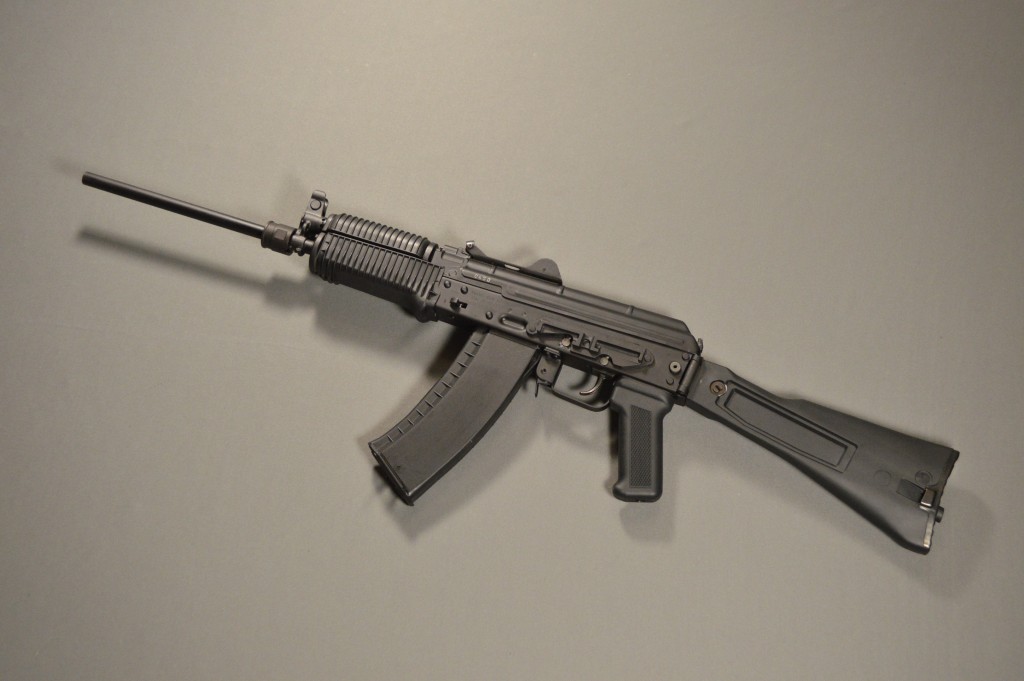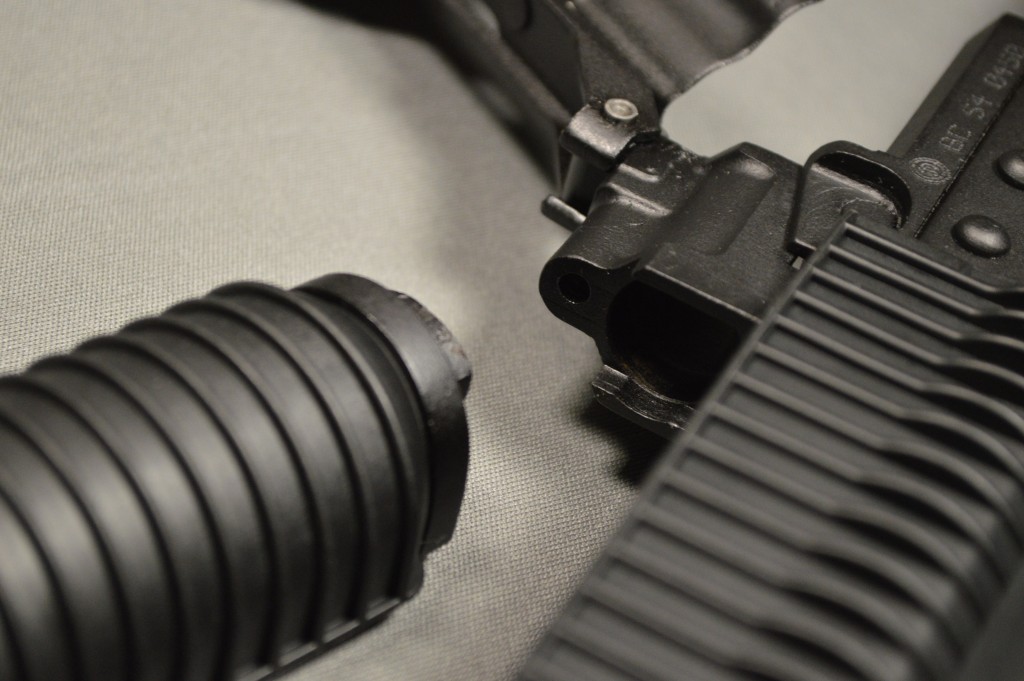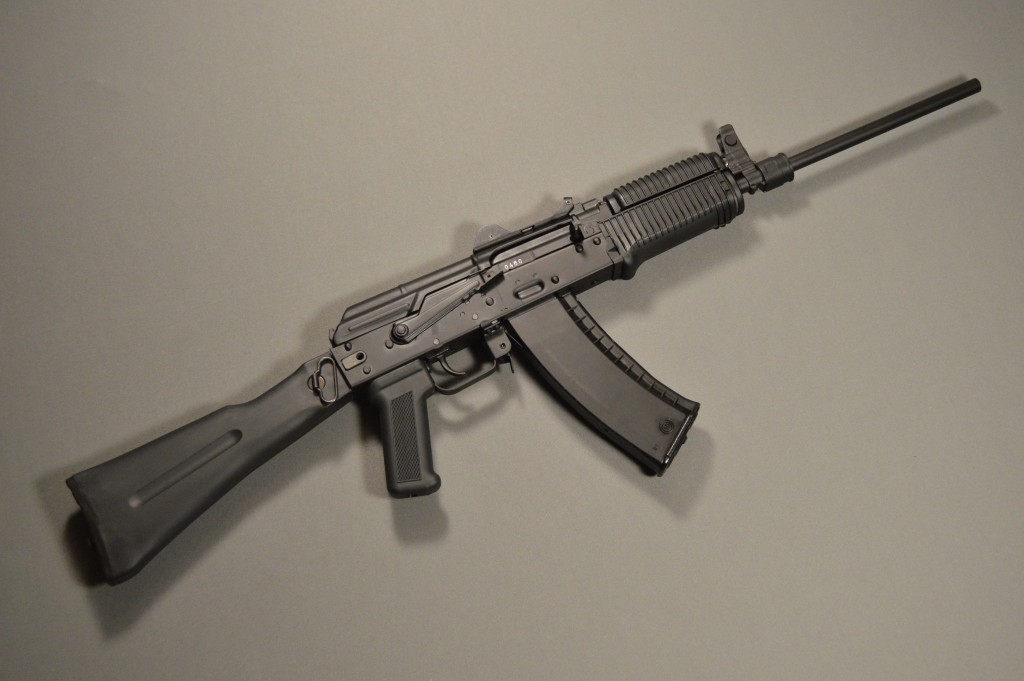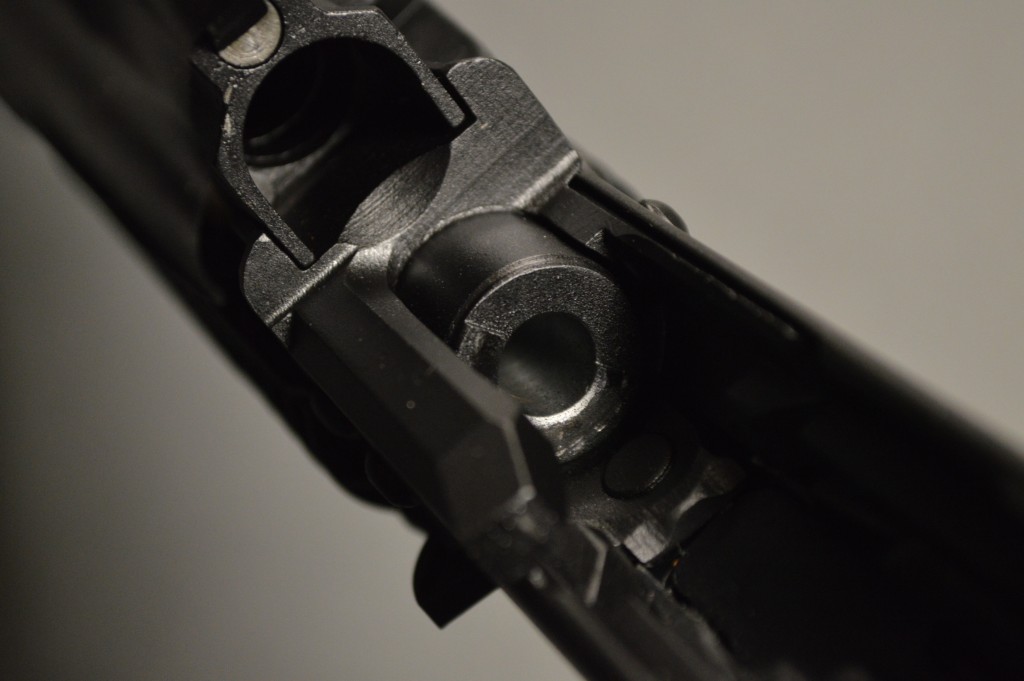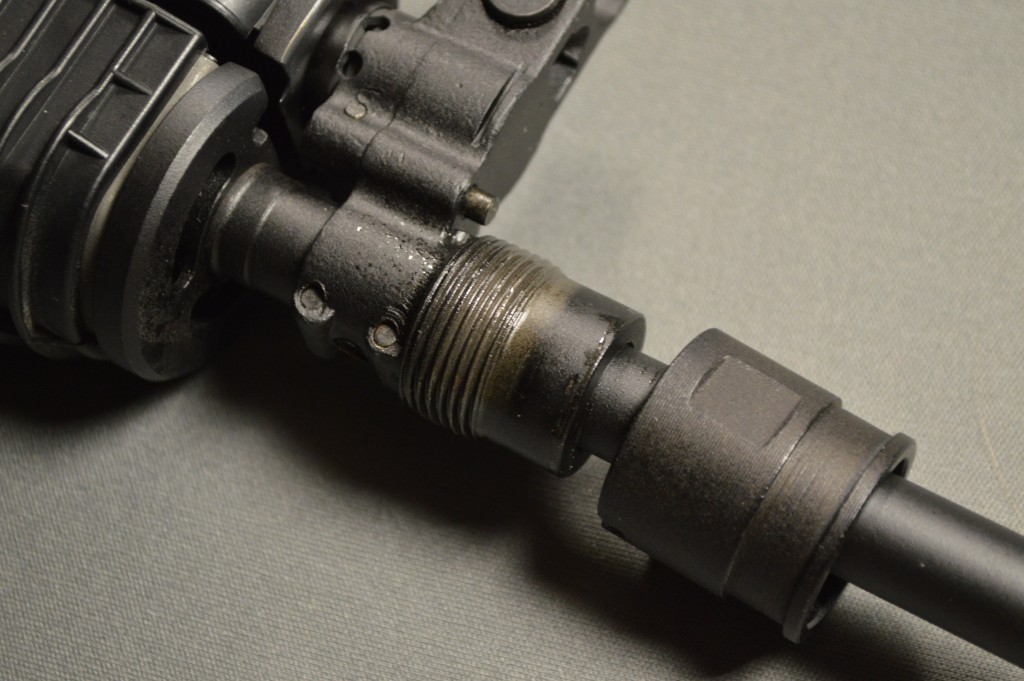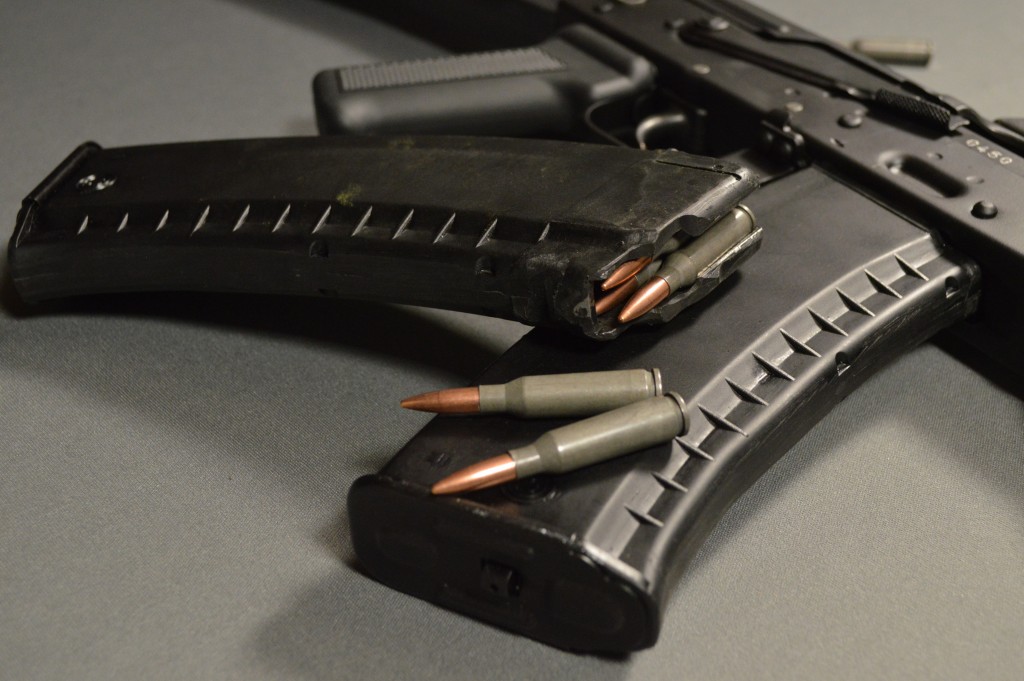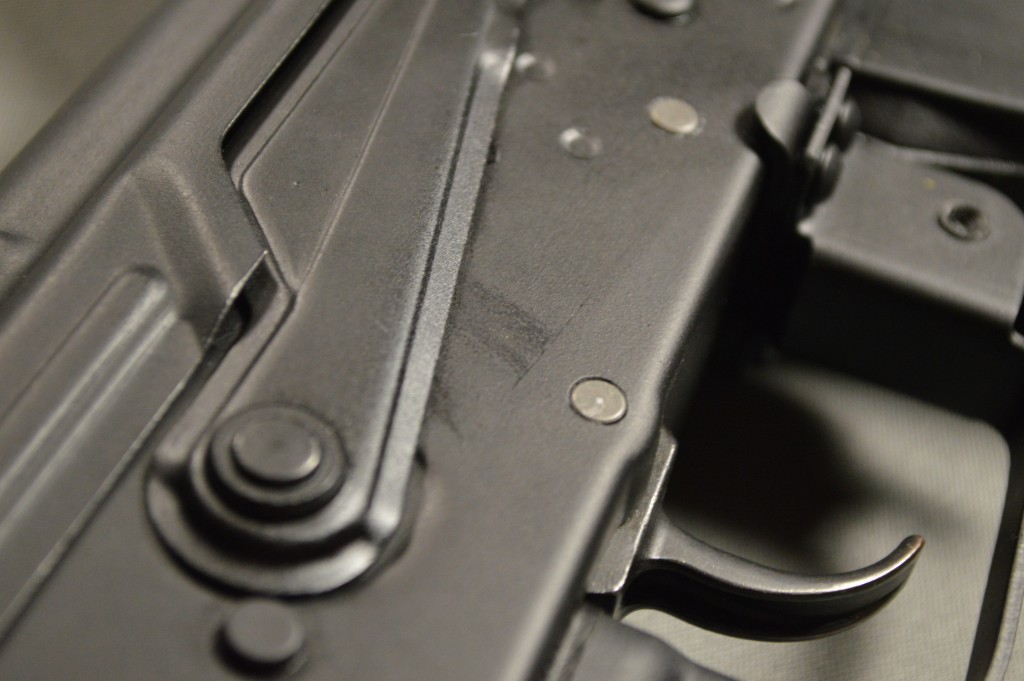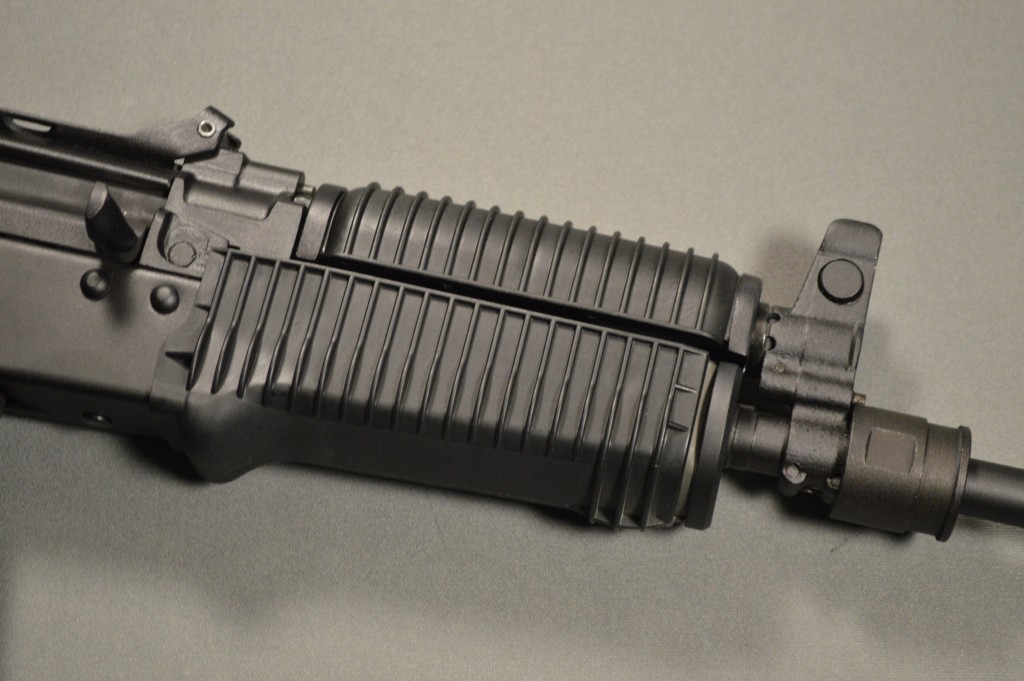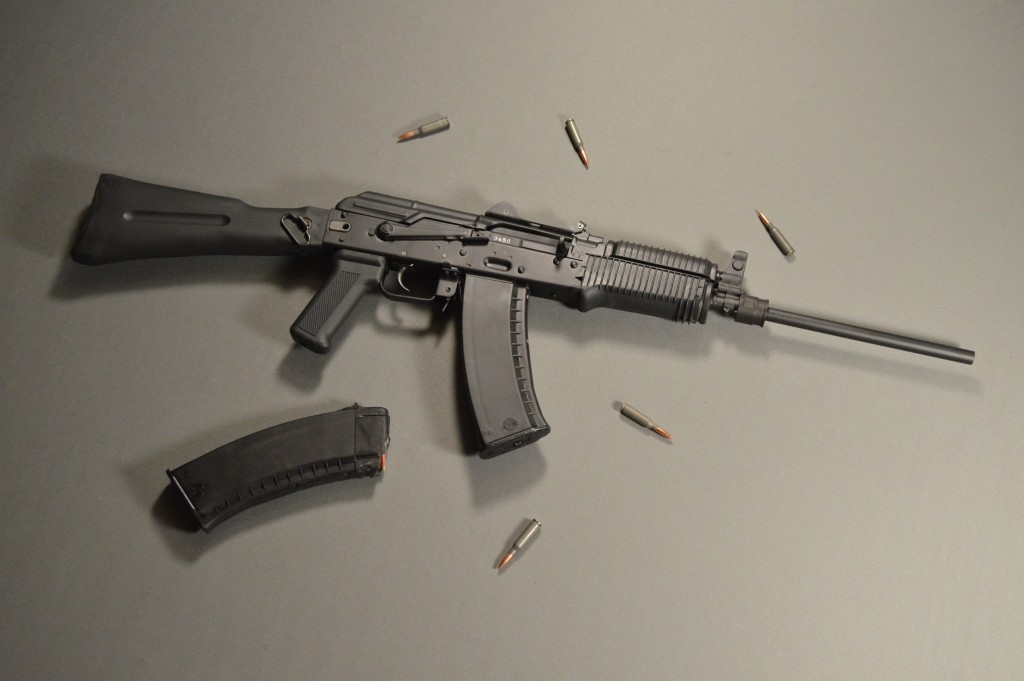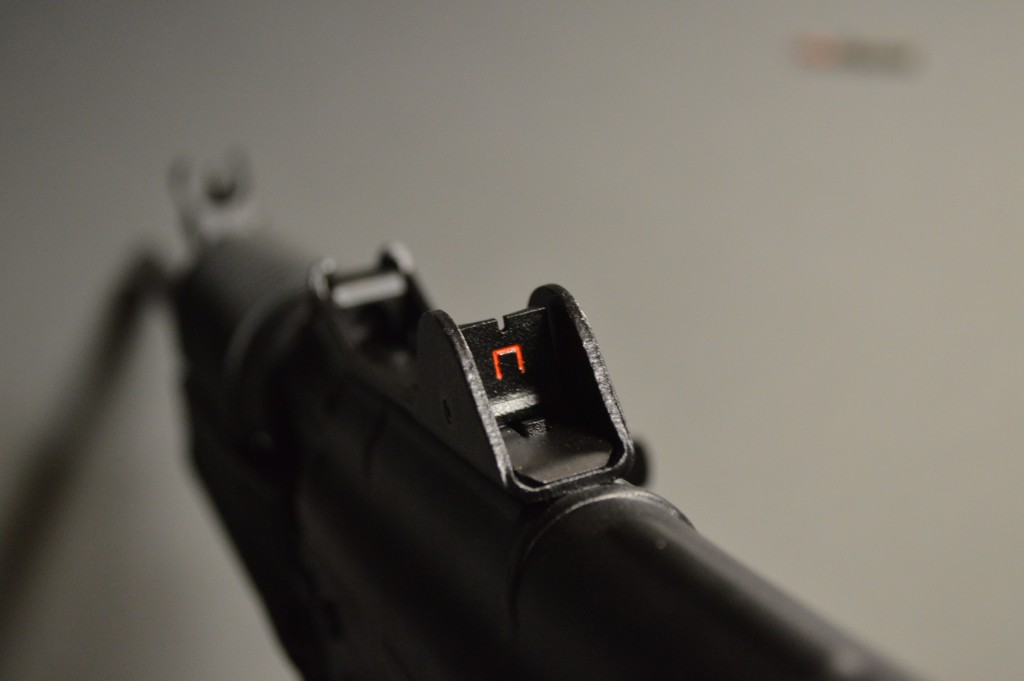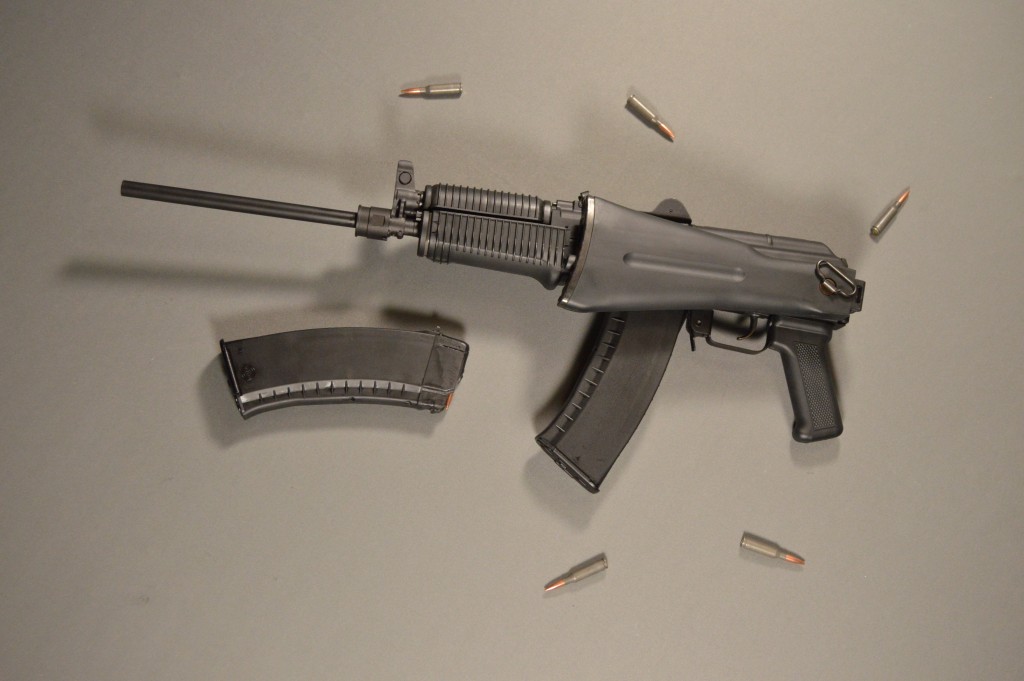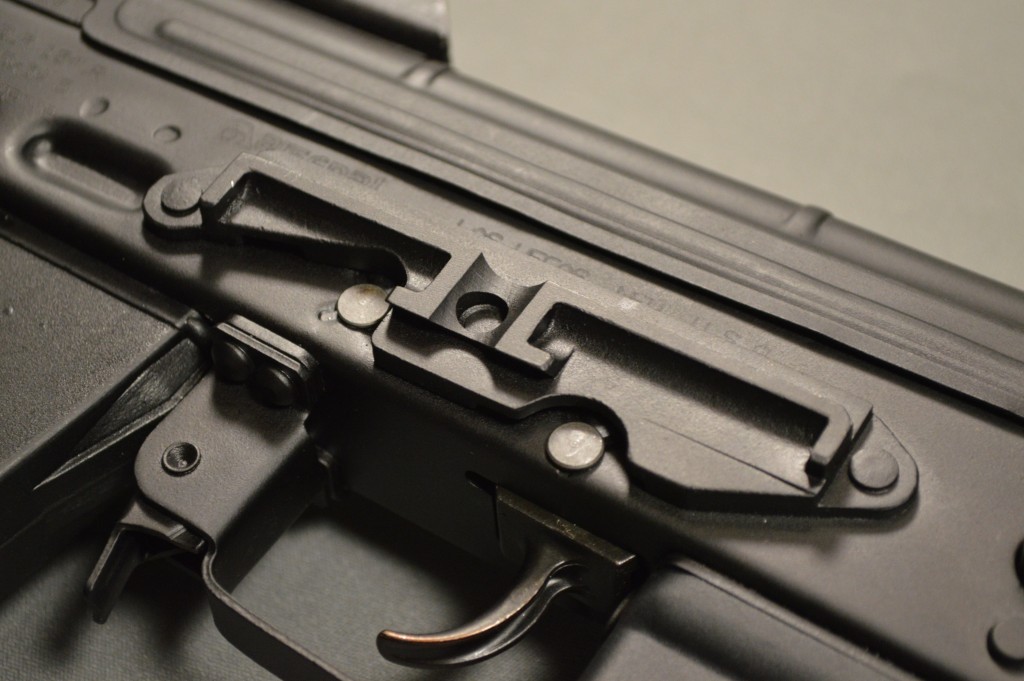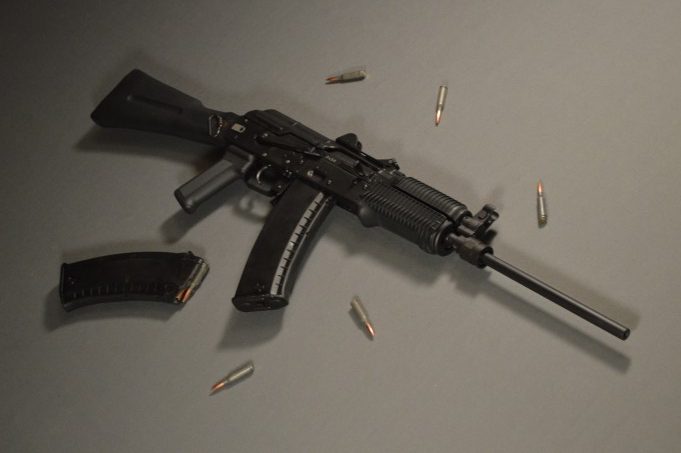Arsenal SLR-104UR (AKS-74U) Review
Even before the AK-74 hit armories in 1974, Russian forces were looking for something smaller and lighter to issue to mechanized, rear line, and special forces troops. While the AKS-74 with its side folding stock was developed around the same time as the fixed stock version, it wasn’t quite as compact as Soviet officials required for the aforementioned use cases. Ultimately, and after nearly four years of testing, an even more compact version of the AKS-74, the AKS-74U (“U” for shortened), was chosen in 1977 (though it wasn’t officially adopted until 1979) after it beat out designs from other famous Russian designers, including S.G. Siminov and Yevgeny Dragunov.
With help from their Russian allies, Bulgaria began to produce licensed AK-74s of all sorts in 1984. Unlike other Soviet satellites that often took Kalashnikov designs and modified them, for both practical reasons and to avoid conflicts over royalties, Bulgaria mostly stayed true to the reference build. The Bulgarians produced almost every major variation of the AK, save the AKM, and all are very close to their Russian progenitors.
The AK we’re looking at today is an Arsenal SLR-104UR. It is essentially Arsenal Bulgaria’s semi-automatic rendition of their AKS-74U rifle. Arsenal has been producing the AKS-74U since the mid ’80s, but having been released in 2013, the SLR-104UR is a fairly recent arrival to US shores. It also happens to be relatively reasonably priced. Whereas kit-built AKS-74Us typically fetch $1,500 or more, the SLR-104UR can currently be had for $1,200. That’s still pricey for an AK, so let’s see if the 104UR is worth the scratch.
The Rifle
As an AKS-74U, the SLR-104UR is part of the AK-74 family. However, the differences between a bog standard AKS-74 and the ’74U are extensive. Namely, the barrel, front sight/gas block, handguards, gas tube, piston, bolt carrier, rear sight block, dust cover, and rear sight, are all specially designed for the AKS-74U. So while the SLR-104UR is chambered for the AK-74’s 5.45x39mm cartridge, it doesn’t actually share many parts with the full size rifle.
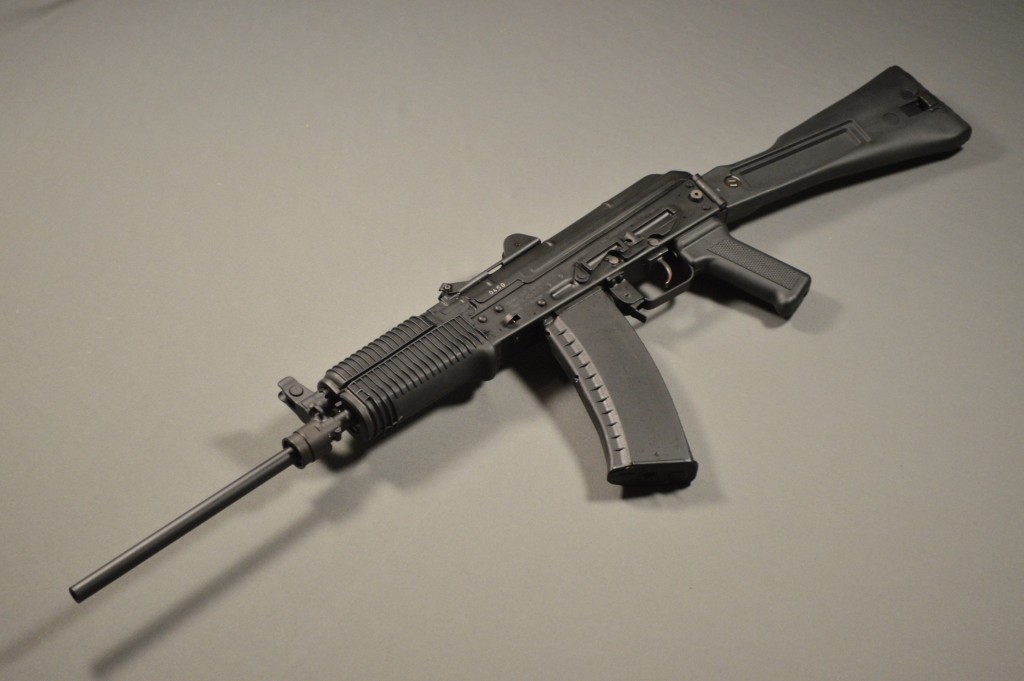
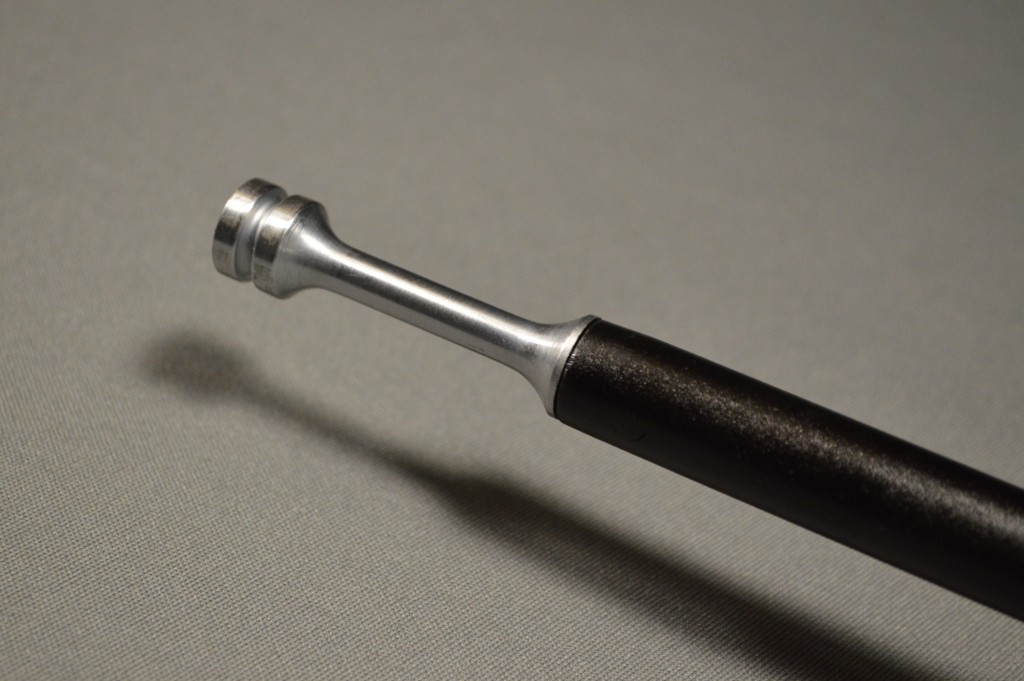
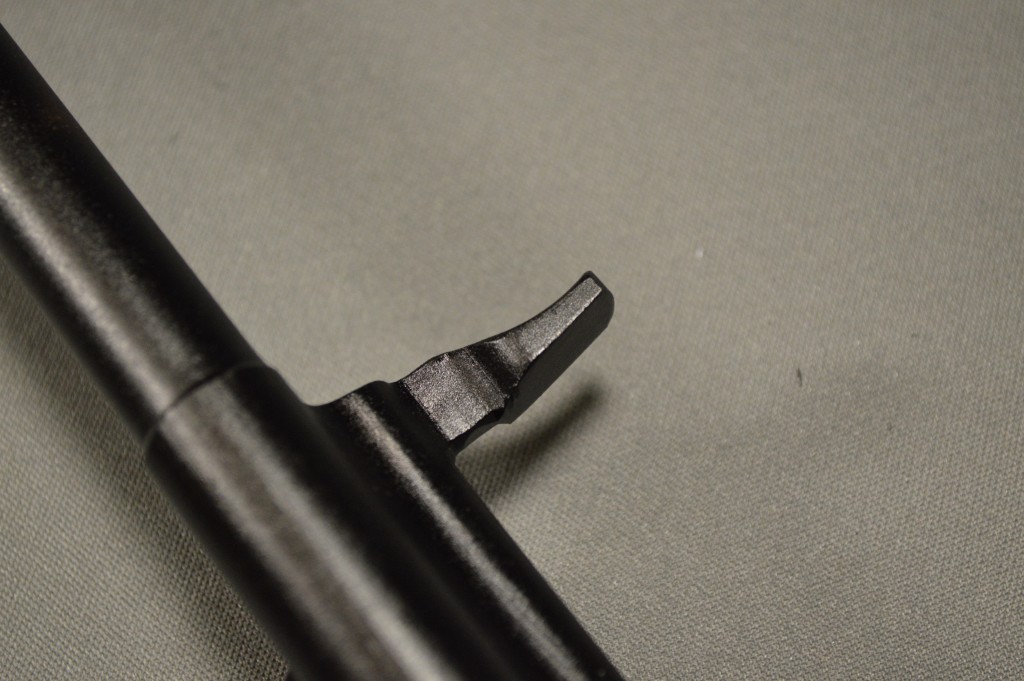
Taking the SLR down for cleaning is mostly the same as any other AK. Press the recoil spring tab at the rear of the dust cover and lift the cover up. Unlike other AKs, the ’74U’s dust cover is hinged at the front sight block and is not intended to be removed from the rifle. With the rifle’s innards exposed, pull the bolt carrier to the rear of the receiver and lift it straight up and out of the gun. When we opened the dust cover, a small tab that retains the gas tube moved out of the way and now that the bolt carrier is out, the gas tube can also be removed.
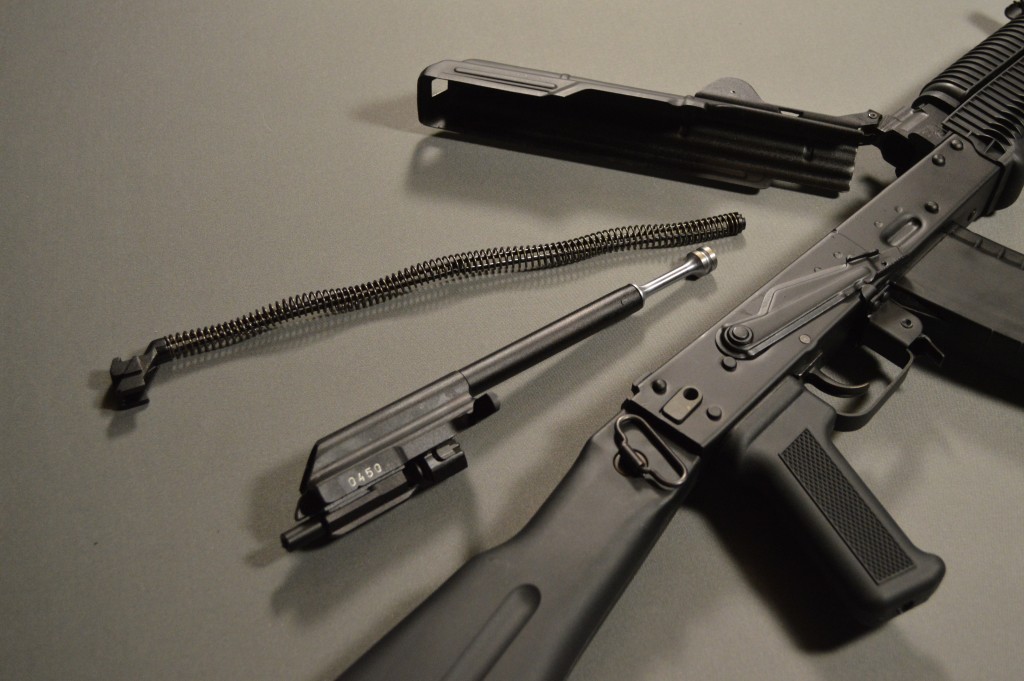
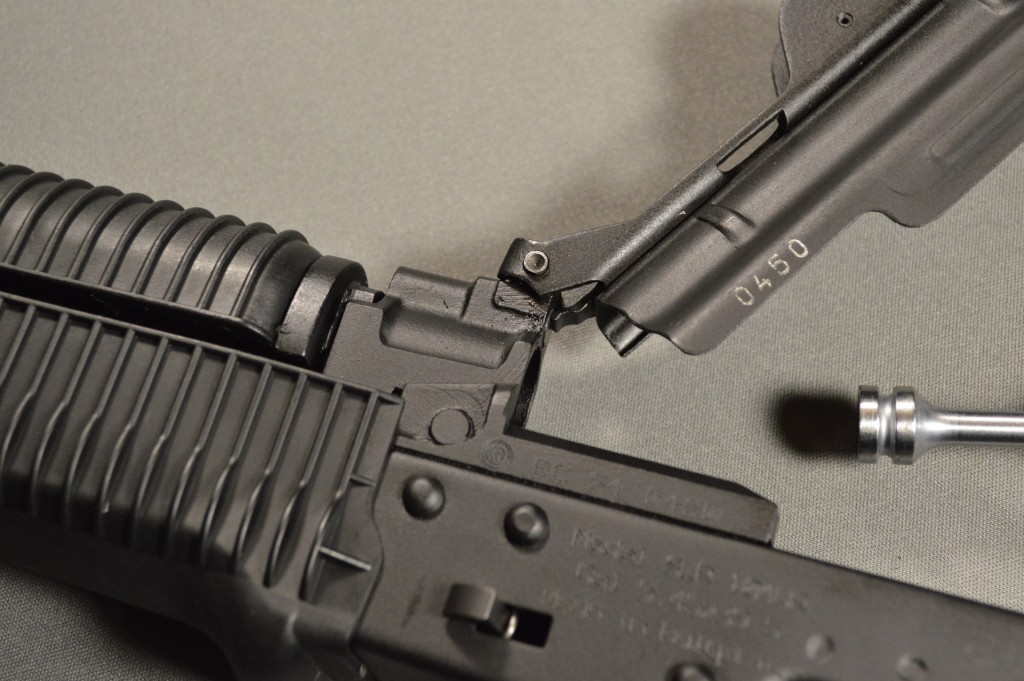
One detail that is present on almost all AKS-74Us and sometimes worries people is the loose gas tube. While most AKs feature relatively tight gas tubes, the AKS-74U’s tends to jiggle pretty substantially. This is normal and attributable to the U’s different retention method. My SLR-104UR’s gas tube is quite loose. If this is the sort of thing that bothers you, perhaps shimming the tube at its rear might help.
The Build
Inside and out, the SLR-104UR is phenomenally well built. Sure, people will occasionally come across Arsenal rifles with canted sights, but that kind of comes with the territory when we’re talking about AKs, particularly factory built ones. As long as the front sight post can be zeroed, most arsenals (little “A”) will call it good. My Saiga even came with a canted rear sight leaf, so it isn’t like small issues are unheard of with high-quality Kalashnikovs. This particular UR features perfectly straight sights and I feel it represents the majority.
In order to comply with 922(r), Arsenal has fitted the SLR-104UR with US furniture and a US-made trigger group. The furniture is fantastic (more on this later), the trigger is less so (again, more on this later).
The centerpiece of the SLR-104UR is its 16-inch, chrome lined and cold hammer forged barrel. Now, I’m one of those people who feels that hammer forged barrels are somewhat overrated in comparison to button-rifled parts made of modern steels, but there is no denying that the Bulgarian barrels are exceptional. Testing has shown that the Bulgarian CHF barrels are slightly softer than Polish examples, but substantially harder than Chinese ones. From an overall hardness perspective, they’re on par with Green Mountain barrels (which is partially why I feel the CHF process is overrated). Of course, most folks will chop this barrel down the the proper 8″ length once they’ve registered the gun as a short barreled rifle (SBR), and the pencil profile lends itself nicely to that.
If you do plan to chop the SLR’s barrel, keep in mind that most new URs now feature gas port reducers. Previously, only the 7.62x39mm SLR-107URs came with reduced-size gas ports and many people complained that the added backpressure from the 16-inch barrels made even the 104UR unpleasant to shoot. Now, Arsenal is installing the reducers inside the gas blocks of all UR models, which is fine when the barrel is 16 inches long. Unfortunately, it can lead to short stroking if you cut the barrel down. Be sure to drill out the reducer if you choose to turn the SLR-104UR into an SBR.
Wobbly magazine lockup due to loose magazine wells is another issue faced by some AKs. With my 104UR, Russian Bakelite, shiny plum, matte plum, and the included Bulgarian black polymer magazines all fit the gun exceptionally well and don’t wobble, even when the rifle is shaken vigorously. If you grab the magazine and jiggle it, some movement can be detected, but it’s negligible.
For years, Arsenal has been heavily criticized for the finish on their rifles. So far, I can say that the complaints are equal parts valid and overblown. If you use a harsh cleaner like Hoppes #9, you’ll likely damage the paint that has been applied over the gun’s parkerized parts. The paint also readily shows rub marks and on the whole isn’t as durable as the appliance epoxy I applied to my Saiga. At the same time, it isn’t like the finish is chipping or falling off. $1,000+ guns deserve better, but the paint isn’t as bad as some folks advertise.
Another reason that the short handguards deserve some consideration is that the SLR’s gas block sits very close to the shooter’s support hand. After only three or four magazines, the handguards get toasty and users will want to be careful not to accidentally touch the gas block when grasping the rifle.
Compared to my full size SLR-104FR, the UR is amazingly light. Specifically, the 6 pound, 3 ounce AKS-74U is almost exactly one pound lighter than the FR. That’s a substantial difference, but it is made even more pronounced by the fact that nearly all of the weight savings come from changes to parts that hang off the gun’s barrel. The UR is much less front heavy than the FR, making for a quicker, handier overall package, even without a barrel chop.
The polymer furniture that comes with the SLR-104UR is American made and is fantastic in pretty much every way. The handguards resemble the Soviet ‘74U prototype forearms that never actually made it to production, but they’re comfortable and the ribs offer very positive purchase.
The stock is a replica of the current production Russian polymer side folders that come on AK-74Ms, but it uses the AKS-74’s 4.5mm axis pin and 6-degree hinge, rather than the ‘74M’s 5.5mm pin and 4-degree hinge. If you look at an Arsenal gun’s stock next to that of a Russian rifle, the Bulgarian part will exhibit a slight downward angle whereas the Russian’s comb will mostly be in-line with the rifle’s barrel. These are small differences, but they’re significant to collectors like me and strictly speaking, polymer left side folding stocks with 4.5mm pins are civilian-exclusive accessories. The Bulgarian military does not and has not used these parts. Even so, the polymer stock feels enough like a fixed one to be very comfortable, at least as comfortable as a relatively short AK stock can be.
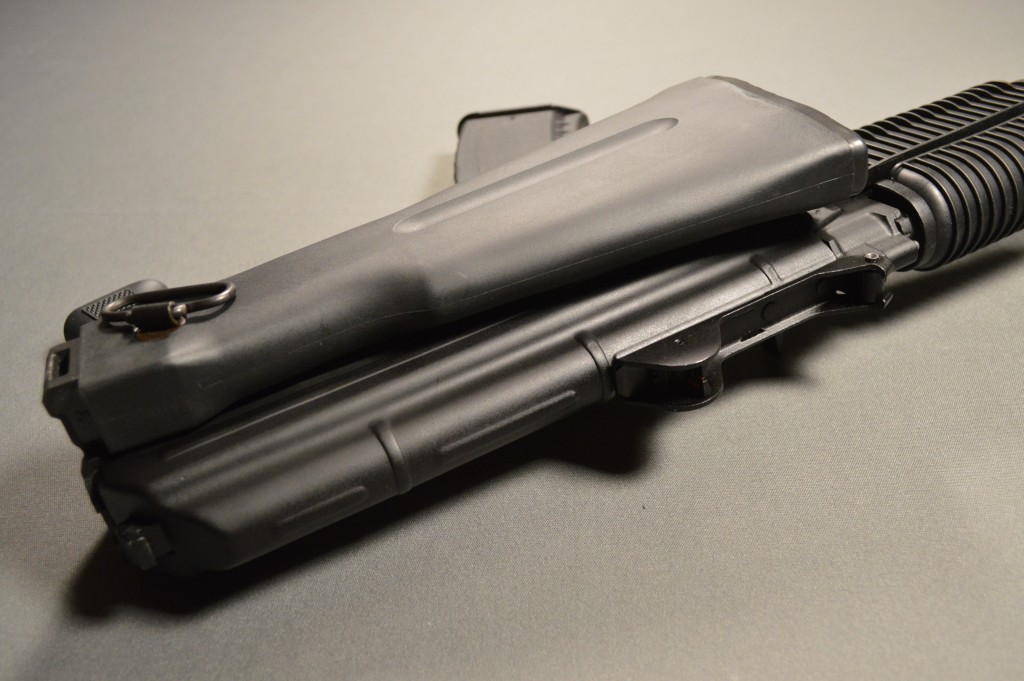
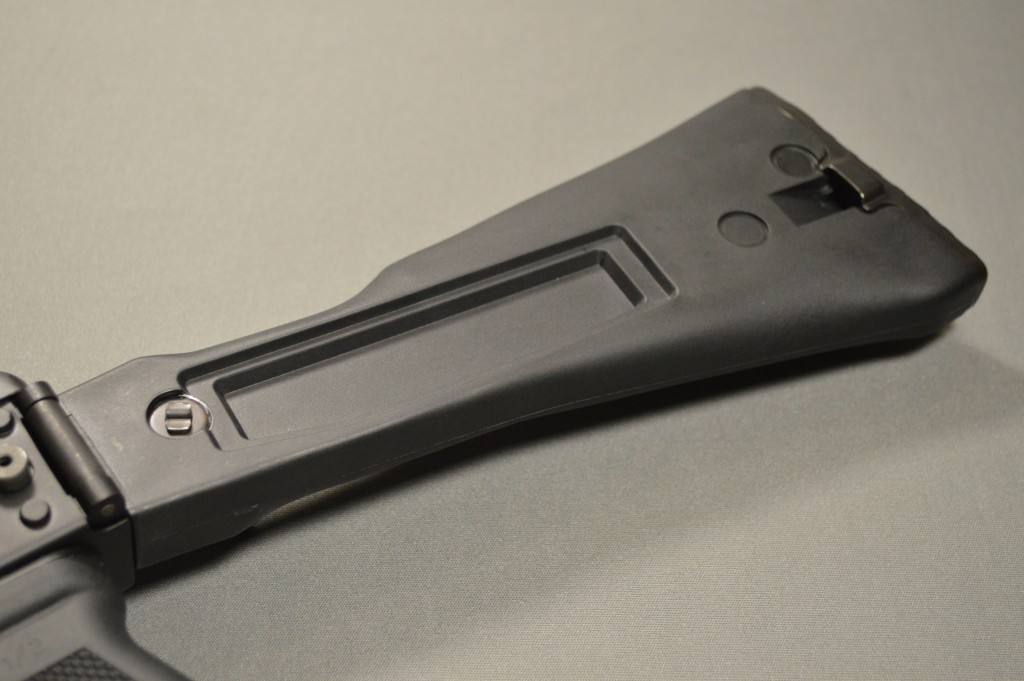
To fold the stock, press the round, gray button at the rear left of the receiver. The buttstock is captured in the folded position by a latch that sits underneath the front trunnion and is exposed out the left side of the gun’s receiver. When it’s time to deploy the stock, simply press the large round button on the part’s buttplate and swing it to the open position. Once locked in place, the stock exhibits no wobble.
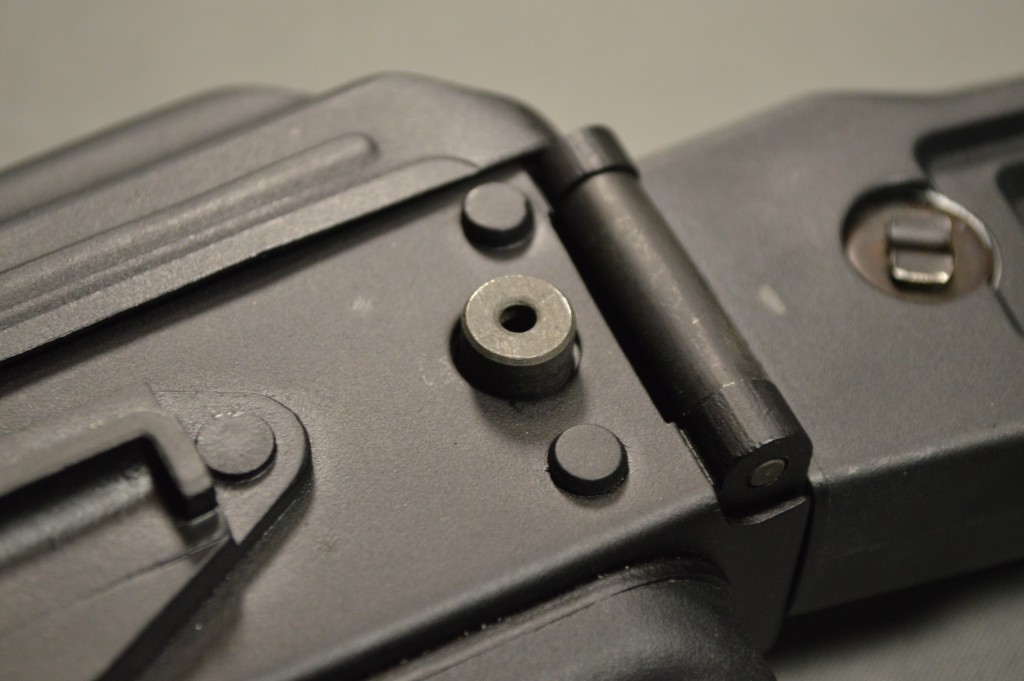

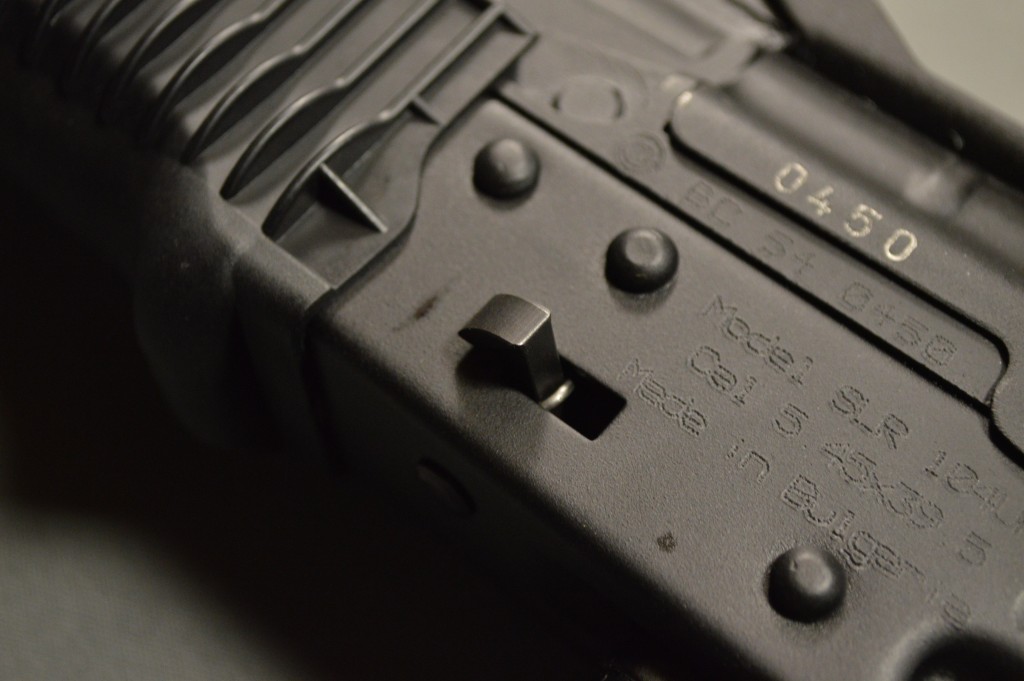
The pistol grip is your typical AK peg-style grip. There’s nothing all that noteworthy about it other than the fact that it is marginally narrower than either of my Russian Bakelite grips.
Sights
The SLR-104UR’s sights are similar to those on standard AK-74s only in the sense that both are U-notch and post affairs. Rather than the tangent rear sights found on most AKs, the AKS-74U sight found on the UR is a simple flip sight with two apertures: one for 0-300 meters and another for 400-500 meters. The rear sight is also attached to the rifle’s unique, hinged dust cover, which helps to lengthen the gun’s short sight radius.
The UR’s front sight is integrated with the rifle’s gas block. It functions and adjusts just like any other AK’s, but it is around 3mm wider than standard front sights. This could cause a problem for some AK sight tools, including my Tapco one.
Range Report
For range testing, I took the SLR-104UR out with 500 rounds of various commercial 5.45 ammunition types. These included Red Army Standard, Silver Bear, TulAmmo, Wolf Military Classic, and Wolf Polyformance. All varieties featured 60 grain FMJ projectiles, which all essentially replicate the 7N6’s bullet construction, sans the steel insert.
The rifle ran through the 500 rounds mostly flawlessly (issues regarding the trigger to come). Extraction was strong and thanks to the restricted gas port, recoil was rather pleasant, especially compared to 7.62x39mm AKs. While I generally tire of shooting my Saiga AKM after a few dozen rounds, the SLR-104UR is a rifle I could (and did) shoot all day.
The SLR was reasonably accurate during my range session, but 3-4 MOA groups were the best I could pull. I feel that the rifle is mechanically capable of better performance, but I ran into two challenges. First, the trigger is bad (more on this in a moment). Second, my Keratoconus effectively makes AK sights unusable for me. It’s a sad reality that I really cannot pick out the front sight post when viewed through the rear notch. Simultaneously trying to focus on the target only exacerbates the challenge. Finally, the short sight radius of the UR just pushes the whole issue over the top. Unfortunately, I’ll have to update this part of the review once I have the chance to mount a red dot to the rifle. Fortunately, the SLR-104UR comes with a side-mounted scope rail.
If you’re a fan of Kalashnikovs, you’ve probably heard that Arsenal’s US-made two stage trigger is terrible. Unfortunately, it truly is. The first stage is gritty and leads up to a wall at around 7 pounds. At approximately 7.5 pounds of force, the second stage breaks and the hammer drops. The breaking point is fairly unpredictable, but it isn’t the worst part of the trigger. In 500 rounds of testing, I experienced three false resets where, even after cycling, the trigger failed to automatically return to the forward position. In one of the three instances, the trigger failed to reset even as I tried to manipulate the safety. That’s not cool.

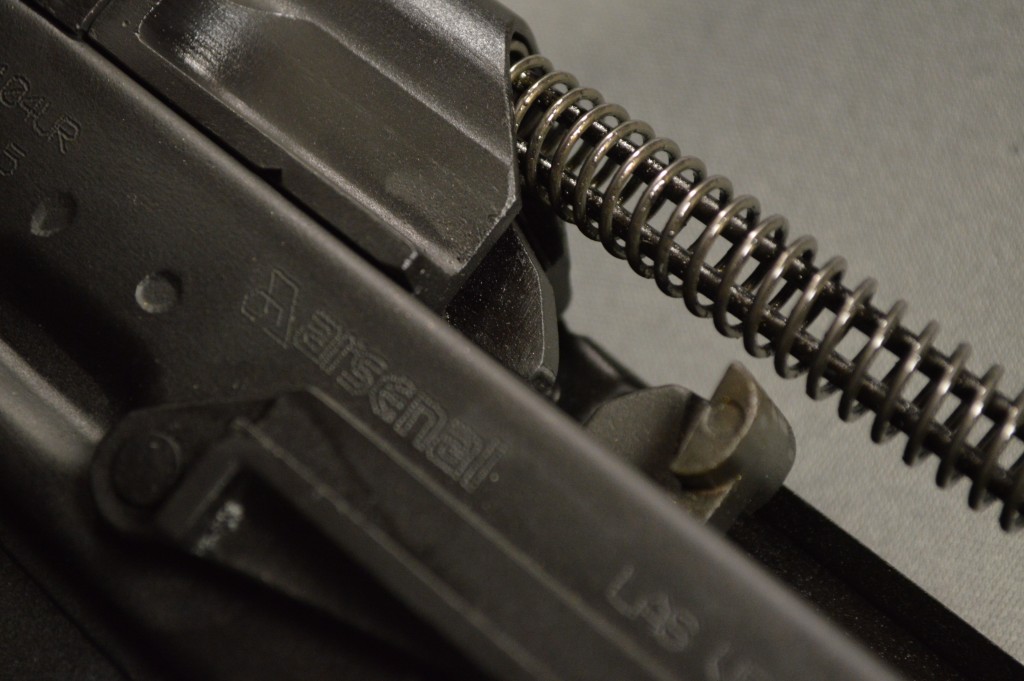
Conclusion
In a vacuum, the SLR-104UR would be a really expensive and perhaps overpriced AK. $1,200 or more for an AK is quite a lot. There’s no way the parts or labor to build the rifles even comes close to that sum. However from a value perspective, the SLR isn’t a bad deal at all. Consider for a moment that before the ‘104UR debuted in 2013, the only realistic way for collectors to acquire an AKS-74U was to purchase a kit gun, often for $1,500 or more. Arsenal could have priced the UR in that ballpark and considering its factory-built status, would probably have had no problem moving the product. At the current $1,200 price point, the SLR-104UR is actually a reasonably good value.
Most importantly, the UR is a fantastic rifle and a superb example of the famous “Krinkov”. It’s lighter and handier than a full size AKS-74 (or SLR-104FR) and it shoots the relatively amicable (to the shooter) 5.45mm cartridge. Arsenal’s build quality is excellent and the finish, while not as good as Gun Kote or Cerakote, isn’t nearly as bad as most would have you believe. My only other real gripe is that Arsenal really, really needs to revise their triggers.
I purchased the SLR-104UR with the hope that it would become my favorite AK in a growing Kalashnikov collection and it has most certainly fit the bill. Even compared to my custom Saiga AKM, the SLR is a more enjoyable shooter and an all-around more useful rifle. I have absolutely no issue with recommending this rifle to my fellow AK enthusiasts.
An information security professional by day and gun blogger by night, Nathan started his firearms journey at 16 years old as a collector of C&R rifles. These days, you’re likely to find him shooting something a bit more modern – and usually equipped with a suppressor – but his passion for firearms with military heritage has never waned. Over the last five years, Nathan has written about a variety of firearms topics, including Second Amendment politics and gun and gear reviews. When he isn’t shooting or writing, Nathan nerds out over computers, 3D printing, and Star Wars.

